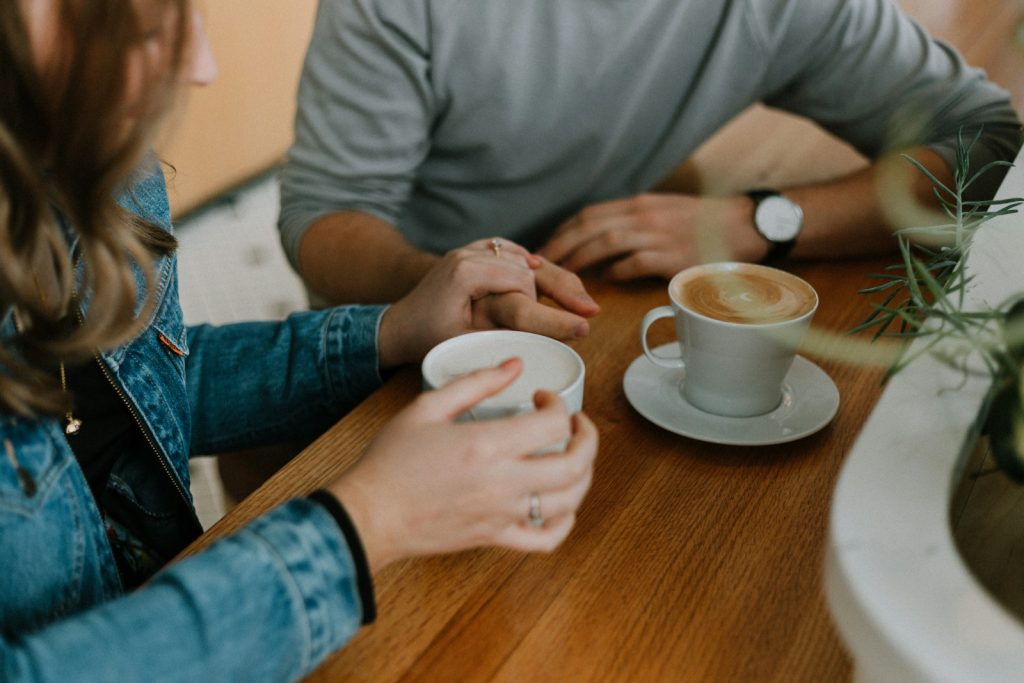Have you ever considered what makes coffee truly special? Coffee tasting, also known as “cupping,” is gaining popularity among enthusiasts. It’s not just about drinking; it’s about savoring the rich mix of flavors. Developing a sharp taste can turn your daily coffee into an exploration of diverse flavor profiles.
Want to enhance your tasting skills? Experiment with coffees from various regions. Each location offers unique flavors and traits. Whether it’s the fruity notes of Ethiopian coffee or the rich chocolate hints of Colombian beans, tasting lets you appreciate these subtle distinctions.
Want to improve your flavor identification? Start a coffee tasting journal. This easy practice can boost your skills gradually. Record your thoughts on aroma, taste, acidity, and texture. Over time, you’ll notice patterns and discover your preferences.
Thinking about hosting a coffee tasting event? It’s educational and enjoyable. Comparing different brews side by side helps you understand what you like. You might even explore different coffee filters to enrich your brewing process.
Table of Contents
Coffee Flavor Profiles Guide
Trying different coffees reveals a world of tastes. Each cup’s flavors depend on the bean’s origin and how it’s processed. From bright acidity to gentle sweetness, each sip shares a unique aroma and story.
Main Coffee Taste Elements
Coffee’s main flavors include acidity, sweetness, bitterness, and body. Acidity gives a lively, tangy edge. Sweetness offers balance. Bitterness adds depth. Body describes the coffee’s weight in your mouth. These elements together create a distinct coffee experience.
Coffee Flavor Profile Comparison Table
This table compares the flavor profiles of different coffee origins, helping readers understand the diversity in taste and aroma among popular coffee regions.
| Coffee Origin | Flavor Notes | Acidity Level | Body |
|---|---|---|---|
| Ethiopia | Citrus, Floral, Berry | High | Light |
| Colombia | Chocolate, Nutty, Fruity | Medium | Medium |
| Sumatra | Earthy, Spicy, Herbal | Low | Full |
| Brazil | Nutty, Cocoa, Sweet | Low | Medium |
Flavor Differences by Region
Regional and climate differences greatly shape a coffee’s taste. Ethiopian coffees, known for floral and fruity notes, grow in high altitudes. In contrast, Brazilian coffees, from lower elevations, often showcase nuttier, chocolatey flavors. Exploring these regional differences can refine your taste and inspire note-taking of your findings.
Curious about global coffee flavors? The National Coffee Association provides detailed insights into coffee cultivation worldwide.
Processing Methods and Their Impact on Flavor
How coffee is processed plays a big role in its taste. Natural processing, where beans dry inside the fruit, boosts fruitiness and body. Washed processing removes the fruit first, giving a cleaner taste with brighter acidity. Knowing these methods can help you spot flavors like berry or citrus in your coffee.
Brewing Methods and Flavor Profiles
Different brewing methods affect coffee’s taste. A French press gives a fuller body with rich, earthy flavors. Pour-over methods highlight acidity and delicate floral notes. Perfecting your brewing? Learning the best temperature for French press coffee can boost your experience. Trying different brewing styles lets you explore a range of tastes, enriching your coffee journey.
How to Drink Coffee to Maximize Flavor and Experience
Improving coffee tasting involves both art and science. By refining your taste buds, you can enjoy a wider range of coffee flavors. Here are some practical steps for coffee tasting and how keeping a coffee tasting journal can be beneficial.
Effective Tasting Steps
To get the most out of each sip, follow these steps. First, inhale the coffee’s aroma. This scent hints at the flavors you’ll taste. Then, take a small sip and slurp it across your tongue. This might feel odd, but it mixes air with coffee, revealing subtle flavors. As you taste, note standout flavors. Are they fruity, nutty, or chocolatey? These steps help improve your coffee tasting skills.
Brewing Method Impact on Taste Table
This table outlines how different brewing methods affect the flavor profile, strength, and body of coffee, assisting readers in selecting the best method for their taste preferences.
| Brewing Method | Flavor Profile | Strength | Body |
|---|---|---|---|
| French Press | Rich, Full-bodied | Strong | Full |
| Espresso | Bold, Intense | Very Strong | Thick |
| Pour Over | Clean, Complex | Medium | Light |
| Cold Brew | Sweet, Smooth | Mild | Smooth |
Remember, there’s no right or wrong in the flavors you find. Recognizing coffee flavors is personal and improves with practice. To enhance your flavor recognition, try this method with beans from different regions and note the unique qualities of each. Learning what makes a house blend coffee unique can further expand your palate by exploring different flavor profiles.
Why Keep a Tasting Journal
A coffee tasting journal is a great tool to track your progress and preferences. Write down the type of coffee, its origin, and the flavors you notice each time. Over time, you’ll see patterns that show which coffee and food pairings you prefer.
This journal is like a map for exploring coffee flavors in an organized way. It’s also useful when hosting coffee-tasting events, allowing you to share insights and experiences with friends.
Perfect Coffee and Food Combinations
Pairing coffee with the right dessert can really make your coffee time special. When flavors match well, they uplift both your drink and food. Whether you’re hosting friends or enjoying a solo coffee break, getting to know different coffee flavor profiles can sharpen your tasting skills. For example, understanding the difference between coffee and latte helps in making smart pairing choices.
Classic Flavor Matches
- Ethiopian coffee has a bright acidity that pairs beautifully with citrus desserts. This combination makes both flavors pop.
- Sumatran dark roast is great with rich chocolate pastries. Its deep, earthy notes blend with chocolate for a satisfying balance.
Create Your Own Pairings
Trying out unique coffee and food pairings can be a fun adventure. Consider these tips:
- A medium roast with nutty notes might complement savory cheese nicely.
- Keep a journal of your coffee tasting notes to track what works and what doesn’t. This practice will not only improve your tasting skills but also refine your preferences.
Remember, there are no strict rules in coffee tasting—it’s about exploring and enjoying the process.
Coffee Tasting Wheel Guide Table
This table provides an overview of key sensory categories on a coffee tasting wheel, facilitating readers in identifying and articulating specific flavors and aromas in their coffee.
| Sensory Category | Sub-Categories | Common Descriptors |
|---|---|---|
| Fruity | Berry, Citrus, Tropical | Blueberry, Lemon, Mango |
| Nutty/Cocoa | Nutty, Chocolate | Almond, Dark Chocolate |
| Floral | Floral | Jasmine, Rose |
| Sweet | Sugar Browning, Vanillin | Caramel, Vanilla |
Hosting an Unforgettable Coffee Tasting Experience
Organizing a coffee tasting event is a great way to explore coffee flavors and refine your taste buds. Whether you’re a coffee expert or just curious, these events are engaging and enlightening. Learn how to host a coffee tasting event for both beginners and enthusiasts.
Thoughtful Planning and Setup
Start planning your event with care. Select coffee varieties from different regions to highlight unique flavors and aromas. Use this quick checklist to guide you:
- Coffee Beans: Choose diverse beans to showcase distinct flavor notes, aiding in flavor profiling.
- Grinders and Brewing Tools: Have the right equipment to brew each coffee style correctly with various brewing methods.
- Cups and Water: Provide small tasting cups and water to cleanse the palate.
- Note Cards or a Tasting Journal: Encourage guests to jot down their impressions for sensory analysis.
Pick a cozy spot that encourages easy interaction, like a friendly café or a spacious living room. A well-organized setup ensures a smooth event and enhances the interactive coffee tasting experience. For tips on selecting the perfect coffee brewing equipment, visit the best types of coffee filters.
Interactive Guest Involvement
Engage your guests with a multi-sensory approach, starting with coffee cupping. Encourage them to smell the coffee to appreciate its aroma, then sip slowly to explore the flavors. Guide them to recognize hints like fruity, nutty, or chocolaty notes.
Enhance the experience with coffee and food pairings. Match a coffee with chocolate notes with dark chocolate to boost its flavors. Foster open discussions where guests share insights and observations, deepening their appreciation of coffee flavors.
By hosting a well-planned and engaging coffee tasting event, you refine your palate and build a community of coffee enthusiasts eager for more. For more ideas, explore SCA’s resources on specialty coffee.
What is ‘Specialty Coffee’ and How to Find the Best?
Specialty coffee isn’t a fad. It’s about savoring unique flavors and the skill in each cup. Ever wondered why some beans have distinct tastes? Let’s explore what makes specialty coffee stand out.
What Makes Coffee ‘Specialty’
Specialty coffee is prized for its high quality. Unlike regular coffee, it often scores above 80 on a 100-point scale by coffee experts. This score looks at flavor, aroma, and aftertaste. But there’s more to it. The growing methods are key. Specialty beans flourish in perfect climates and are often handpicked. This careful selection boosts their flavor, offering a richer taste for coffee fans. Wonder why it’s pricier? It’s the detail and quality involved. For instance, oily coffee beans can show their quality and freshness.
Finding Specialty Coffee
Want to try this incredible brew? Seek out local coffee shops that value quality and get their beans from trusted farms. Many cafes hold coffee-tasting events, where you can sample various flavors and spot blend differences. Consider keeping a coffee-tasting journal. It helps you remember your favorites and what makes them unique. Also, online subscription services deliver artisan coffee to your door, letting you sample new flavors from around the world.
Final Thoughts
Exploring coffee flavor profiles is a thrill for any coffee fan. As your tasting skills improve, you’ll notice unique notes in each sip. Try pairing coffee with different foods or use various tasting methods like coffee cupping. Each experience will deepen your knowledge of coffee.
Diving into specialty coffee is enjoyable and enlightening. Keeping a journal helps track your discoveries and refine your taste over time. Hosting coffee gatherings with friends is a great way to share your passion. Each chance to explore coffee flavors enhances your appreciation for diverse tastes. For those curious about the differences between coffee types, understanding the difference between coffee and latte can enrich your tasting adventure.
FAQs
What is coffee tasting and why is it important?
Coffee tasting, or cupping, is the process of evaluating the flavors and aromas of coffee. It is crucial for developing your palate and appreciating the diverse profiles of coffee beans from different regions, like Colombian and Ethiopian. Understanding tasting notes enhances your coffee experience.
How do I develop my coffee palate?
Develop your coffee palate by sampling various coffee beans and focusing on distinct flavors like fruity, nutty, or chocolaty. Experiment with different brewing methods and take notes. Engaging with coffee tasting events can refine your sensory skills.
What are the primary flavors in coffee tasting?
Primary flavors in coffee tasting include floral, fruity, nutty, and chocolatey notes. Acidity, sweetness, and bitterness are also analyzed. Recognizing these elements helps in distinguishing the unique profiles of beans, like Arabica or Robusta.
Is coffee tasting worth the effort for beginners?
Yes, coffee tasting is worth it for beginners as it enhances appreciation for coffee’s complexity. Understanding different flavor profiles allows for better selection and enjoyment. Beginners can gradually refine their taste preferences through regular practice.
What is the best way to start a coffee tasting session?
The best way to start a coffee tasting session is by preparing freshly ground coffee, smelling the aroma, and then tasting it while noting flavors. Use a consistent method like French press for comparability. Engaging all senses enhances evaluation accuracy.

